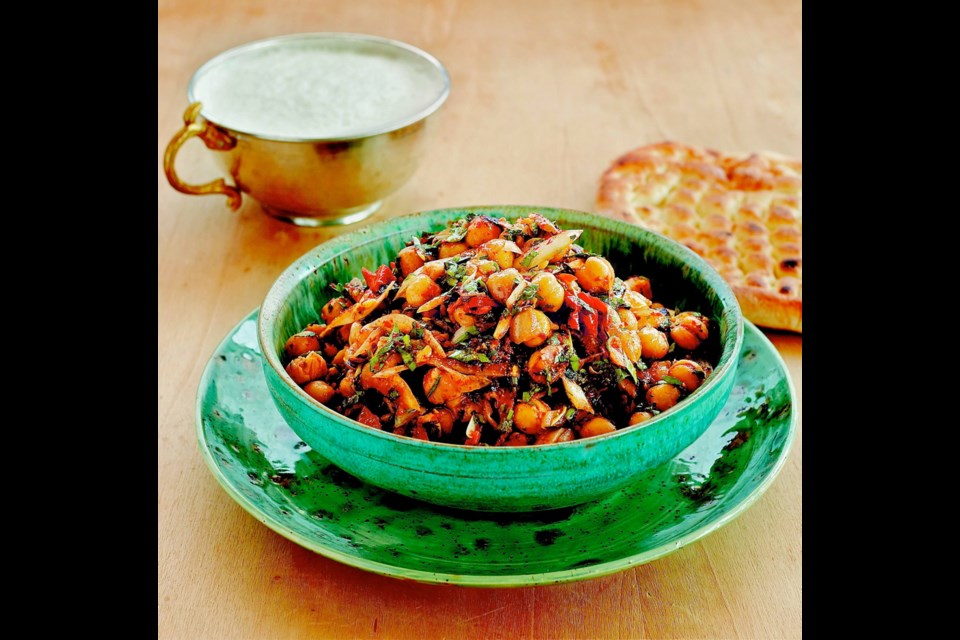Turkey is an interesting country, a small part of it in southeastern Europe and a large part in western Asia. It’s also part of the Middle East and over its long history, the Greek, Persian, Roman, Byzantine and Ottoman empires influenced its culture.
Those dynamics, and also the country’s geography, with its diverse landscape and surrounding seas, including the Black, Aegean and Mediterranean, have simmered together to create a cuisine that’s remarkably diverse.
Perhaps the person most aware of that is Musa Dagdeviren, a talented chef and owner of three Istanbul restaurants, including the acclaimed Çiya Sofrasi (ciya.com).
Dagdeviren is kind of a Turkish food anthropologist — many, many years ago, he became obsessed with learning all he could about his country’s food.
He did that by travelling all over Turkey, sampling dishes, documenting his experiences and collecting recipes.
You can get a taste of how extensive his research was by watching Chef’s Table on Netflix — he was a subject of the docuseries in Season 5.
But for an in-depth look at Turkish cuisine, you’ll want to purchase Dagdeviren’s recently published hardcover tome The Turkish Cookbook (Phaidon, $59.95).
It’s an incredible, hefty, 510-page book filled with rich and riveting information about Turkish food. It has 550 recipes, spread over 14 chapters, with 13 of them dedicated to a certain type of food, such as soups, vegetables, eggs and pulses, stuffed and wrapped dishes, pilafs, red meat, breads and pastries, and desserts.
An additional chapter in Dagdeviren’s book features delicious recipes from eight guest chefs.
You’ll find recipes for yogurt and cracked wheat soup, vegetarian stuffed vine leaves, sole kebab, bulger pilaf with lamb, lentil bread and sumac cordial. And that’s just a tiny sampling.
To learn more about the book, I emailed questions to Dagdeviren in Istanbul. They, and his answers, follow.
Akis: The Turkish Cookbook is epic, almost encyclopedic. How many years did it take you to compile the recipes and related information, and what motivated you to dedicate so much time and effort to this project?
Dagdeviren: I have been chasing after and documenting authentic recipes in Turkey for about 40 years. It is a true labour of love. You cannot do it any other way. I founded Çiya Foundation and have been publishing Yemek ve Kültür (Food and Culture) magazine, as well as running Çiya Publications.
I am passionate about new recipes, ingredients, cooking techniques, regional variations of dishes and the cultural significance of recipes.
My passion has become my mission over the years. I now feel a responsibility to continue for as long as I can.
Akis: For someone not familiar with Turkish cuisine, is there a short way to describe what it’s all about it?
Dagdeviren: The Turkish Cookbook is a very fine introduction to Turkish culinary practices. It is much more than a collection of recipes. It provides cultural, regional context. In terms of recipes, it is a very comprehensive collection, which provides access to the classics as well as local, regional recipes, which are relatively obscure. It is a good introduction to the diversity of Turkish cuisine and provides a good framework about the significance of seasonal ingredients, importance of geography. I am hoping that it will serve as a good reference for Turkish, Mediterranean and Middle Eastern chefs and international food aficionados.
Akis: The book has over 500 recipes, but can you tell me one of your favourites and why?
Dagdeviren: Allow me to mention two — garlic kebab and onion kebab. They are both simple recipes with very basic ingredients, using similar techniques. You literally sample the change of seasons with these dishes.
Akis: Why do think someone in Canada who likes to cook would enjoy this book?
Dagdeviren: Discovering a new cuisine is always exciting, so someone who is in it only for the recipes would get a lot out of the book. The more serious cook, or let’s say the food lover, would really enjoy the cultural connotations of the recipes, their stories and regional variations. I hope they all enjoy it.
Chickpea Salad (Nohut Piyazi)
This flavourful recipe is adapted from one in The Turkish Cookbook.
Author Musa Dagdeviren says it’s popular street food in Turkey’s Adiyaman province.
Preparation time: 10 minutes, plus overnight soaking
Cooking time: one hour 40 minutes
Serves: Four
200 grams (1 cup) chickpeas (garbanzo beans), soaked, covered in water, overnight
60 mL (1/4 cup) olive oil
1 medium onion, sliced into crescents
2 garlic cloves, roughly chopped
1 small hot red bell pepper, sliced into crescents
2 sundried tomatoes, finely sliced
1/2 tsp salt
1/2 tsp ground cumin
1/2 tsp dried chili (red pepper) flakes
1 tsp ground sumac (see Note)
2 Tbsp lemon juice
1/2 bunch flat-leaf parsley, finely sliced
6 fresh basil sprigs, finely sliced
Drain the soaked chickpeas (garbanzo beans), then cook in a saucepan of simmering water until soft, about 1 1/2 hours.
Drain and put the cooked chickpeas into a large bowl.
Heat the oil in a large saucepan over medium heat, add the onions and garlic, and cook for two minutes.
Add the bell pepper and sundried tomatoes and cook for a further minute.
Add 1/2 tsp salt, then pour the mixture over the chickpeas and mix gently.
Add the cumin, dried chili (red pepper) flakes, sumac, lemon juice, parsley, and basil, mix gently and serve.
Note: Sumac is a spice with a lemony flavour. You’ll find it for sale in Victoria at specialty and bulk food stores.
Eric Akis is the author of eight cookbooks. His columns appear in the Life section Wednesday and Sunday.



